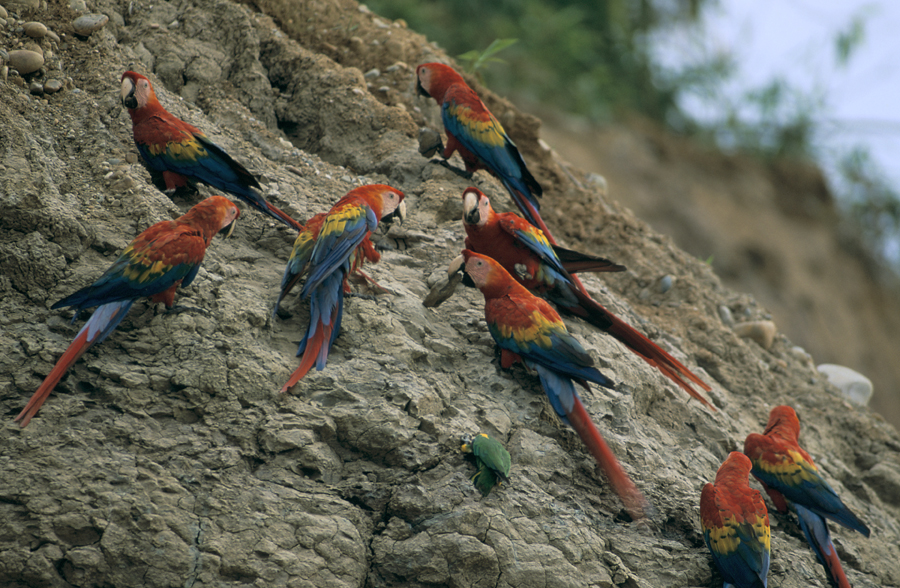General information
- Genus: Ara
- Species: Macao
- Also known as: Red-Blue-and-Yellow Macaw, Red-and-Yellow Macaw, Red-Breasted Macaw
- Subspecies of Scarlet Macaw: Ara Macao Cyanoptera
- Average length: 85 cm (33.1 in.)
- Adult weight: 1060 – 1123 g (37.1-39.3 oz.)
- Diet: Fruit, seeds, nuts, plants, nectar, clay
- Life span in the wild: 30 – 50 years
- Clutch size: 2 to 4 eggs
- Natural habitat: Variety of habitats but most commonly in humid tropical evergreen forests, often near water. In general up to 500 m (1640 ft.), locally to 1000m (3280 ft.).
- Geographical range: From Central Nicaragua to Amazonian Peru and Brazil (subspecies also in northern Central America)
Interesting Scarlet Macaw facts
- In the Amazon rainforest, they flock to riverbeds (claylicks) to eat clay.
- The Tambopata National Reserve in south-eastern Peru has various claylicks including the world’s largest known one.
- Macaws are the world’s largest parrots.
- Scarlet Macaws can fly up to 35 miles per hour (56 km/hour).
- They can measure almost a metre long, of which more than half is their tails.
- They live up to 50 years in the wild.
- Their calls (“rrraaah”) can sometimes be heard kilometres away.
- They are the national bird of Honduras.
- In common with many parrots, the dark grey colour of their eyes turns light yellow when they are young adults and they are usually left-footed.
IUCN conservation assessment
- Estimated world population: Fewer than 50,000
- Conservation status: Least Concern
- Population trend: Decreasing
Sources
- World Parrot Trust
- Iñigo-Elias, Eduardo E. 2010. Scarlet Macaw (Ara macao), Neotropical Birds Online (T. S. Schulenberg, Editor). Ithaca: Cornell Lab of Ornithology; retrieved from Neotropical Birds Online
- BirdLife International 2012. Ara macao. In: IUCN 2012. IUCN Red List of Threatened Species. Version 2012.2. Downloaded on 22 April 2013.

Group of Scarlet Macaws at Collpa Colorado clay lick

Scarlet Macaw nest box built by the Tambopata Macaw Project
